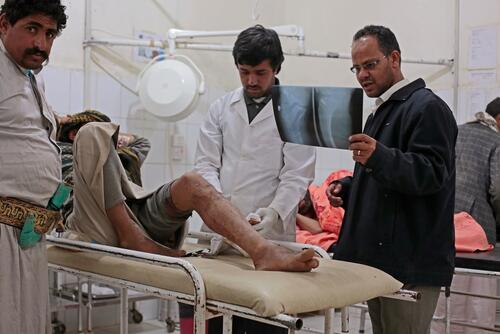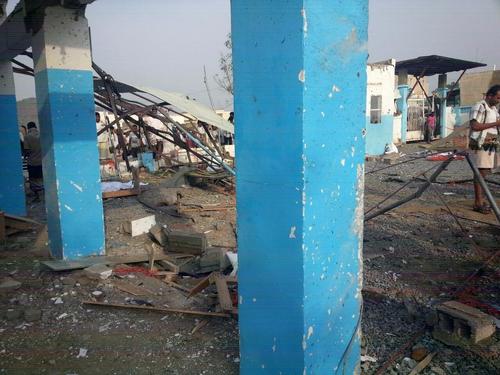Testimony by Dr Mariela Carrara, an MSF emergency physician, Sa’ada city, Yemen
This article appeared on BBC News on 24 February 2016.
When I first came to Sa’ada city in May, the city was being hit by airstrikes every day. We were living in the basement of the hospital because of the bombing, which was very close by. With each blast, you could feel the windows and doors shaking. Two months later, the city had been almost completely destroyed and was empty of people.
Now, the airstrikes are mostly happening 20 km away or more, towards the border with Saudi Arabia. Our team no longer lives in the basement, but stays in a house nearby. People have returned to the city, and are living in the buildings that are still standing. Some shops are open, and you can buy fruit and clothes in the market.
But beyond the city, in the areas where many displaced people are staying, conditions are really bad. People are living in small tents and have problems getting water and healthcare. Ten days ago we distributed essential relief items to some of the displaced.
The hospital has changed a lot since I’ve been here. Because of people’s urgent medical needs, the number of beds has increased from 30 beds to 94, and the intensive care unit has expanded from seven to 16 beds. As an emergency doctor specialising in internal medicine, I spend most of my time in the emergency room and the inpatient department.
Most of our patients – more than 90 percent – are war-wounded, with injuries from airstrikes. On 21 January, an airstrike in Dhayan, 22 km northwest of here, caused multiple deaths and injuries. As the rescue operation started and the ambulances arrived, they bombed a second time, killing even more people. One of our ambulance drivers died, as did the four or five wounded patients he was transporting in his vehicle.
We received our first patients at three that afternoon, brought here by people in private cars. They said more wounded were on their way. These five or six patients were all in a severe condition, and some needed immediate resuscitation.
We immediately activated our mass casualty plan – bringing in extra staff and medical supplies, getting tents ready outside the hospital for triage and for patients in a more stable condition, moving patients from the inpatient ward to free up more beds, and opening our third operating theatre.
By the time the next group of injured arrived minutes later, everything was in place. It was very good teamwork. We’ve experienced so many mass casualty incidents by now that our staff know exactly what their role is.
Lots of the patients needed to be rushed into the operating theatre as soon as they arrived. We have four surgeons – two general and two orthopaedic – and they are amazing. But it was hard work. By seven that evening, we had received 41 wounded people.
The ambulance driver who was killed had worked in the hospital for a long time and everyone knew him. When we got the news about the airstrike on Dhayan, he was first into his ambulance to rescue these people. That’s what he was like – a very kind and committed man, always helping people. Everyone was very sad about his death.
After the attacks on Haydan hospital in October, and on Shiara hospital in January, patient numbers went down, as people were scared that hospitals were being targeted. But after a few weeks, people started coming back. As well as the war-wounded, we’re seeing more people with chronic diseases, more deliveries in the maternity ward, and more women coming for antenatal care and family planning services – so we’ve increased the number of midwives.
Even though conditions here are not easy, and the work can be challenging, I am pleased to be working here. People in Yemen are extremely nice, and very appreciative of the help we provide. In return, we are trying to do the very best we can for them.







